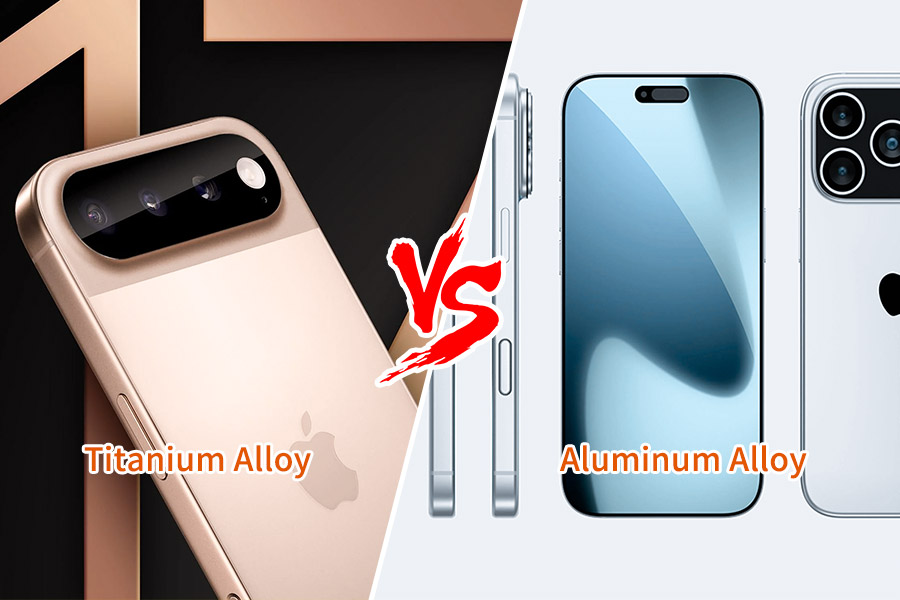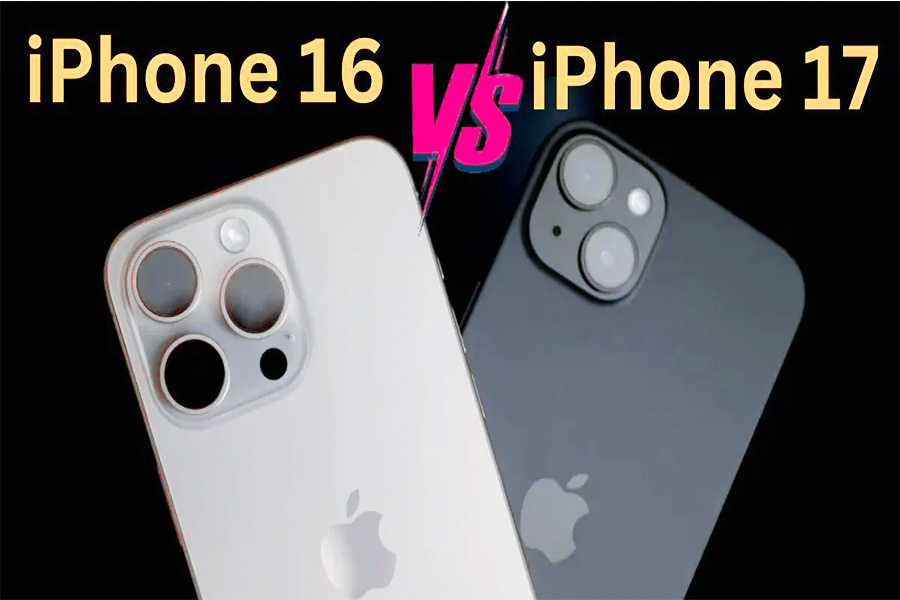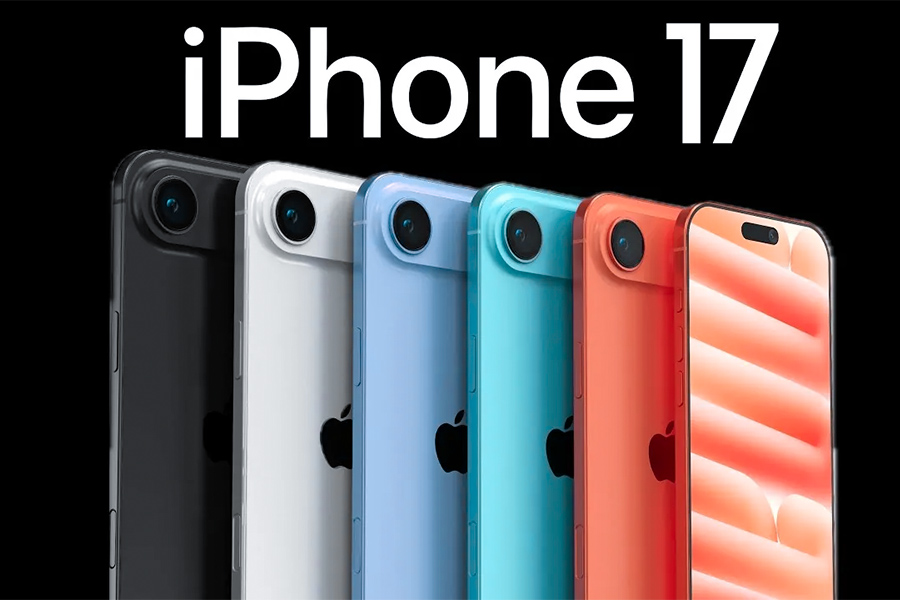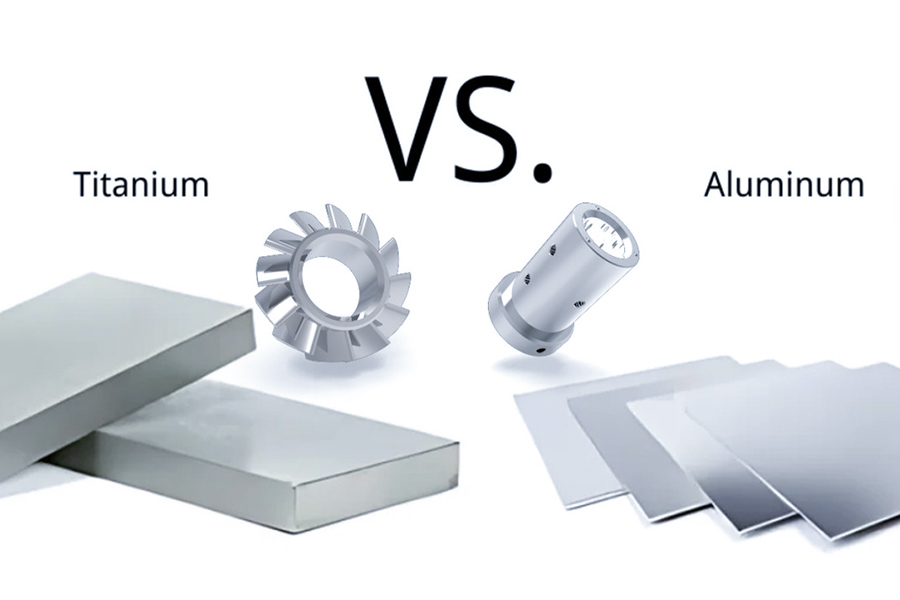Every September, the whole world's eyes are fixed on Cupertino's stage. Every introduction of Apple's new products stirs the souls of hundreds of millions of customers. Since the iPhone 15 Pro series is boldly using a lightweight yet strongtitanium alloyframe for the first time, bringing the texture and durability of flagship products to a completely new level, the subject of the material for the next-generation iPhone frame has been brought to a boiling point. Now, our eyes transcend the next generation and look to the distant future:the legendary iPhone 17, will it continue this material revolution brought about by titanium alloy, or will it seek breakthroughs in aluminum alloy or other materials to achieve a new subversion?
The choice of frame material is not simply superficial work of "cool appearance" or "delicate feel.".It is an important engineering decision that affects the whole body and has a profound effect on the basic parameters of the user's daily life: weight determines the comfort of grip over a long duration, strength relates to the ability of the phone to resist falling and bumping, heat dissipation directly affects the processor performance and battery life, and the cost of manufacturing has a direct relation with product pricing. Among the possible choices for iPhone 17, which one is better than the two most popular protagonists -aluminum alloyand titanium alloy? How will they shape and characterize the next iPhone?
In order to enable you to quickly and conveniently grasp the essential differences between these two significant materials as mobile phone bodies,we firstly list the main points and provide you with a peak showdown oftitanium and aluminumthrough the following comparison table.
Core Comparison Of IPhone Body Materials: Titanium Alloy Vs Aluminum Alloy
| Characteristic | Titanium alloy (predicted for Pro/Ultra models) | Aluminum alloy (predicted for standard models) | What it means for you? |
|---|---|---|---|
| Strength-to-weight ratio | Very high. At the same strength, it is 45% lighter than steel, but heavier than aluminum. | Good. Very light, but a thicker volume is required to achieve the same strength. | Titanium alloy bodies are more resistant to bending and accidental drops, and feel "solid" and not bulky. Aluminum alloy bodies pursue extreme lightweight, but the structural strength is relatively lower. |
| Feel and texture | Warm and skin-friendly. Has a unique brushed or matte texture. | Cool and smooth. Easy to anodize to achieve colorful and bright colors. | Titanium alloy provides a low-key and luxurious professional feel. Aluminum alloy offers a wider range of personalized color options. |
| Durability (scratch resistance) | Very high. The surface hardness is much higher than that of aluminum alloy, and it is not easy to scratch. Medium. | The anodized layer provides some protection, but deep scratches will reveal the silver body. | Titanium phones can still maintain a new look after long-term use, which is more "value-preserving". Aluminum bodies are more likely to show visible signs of wear and tear from daily use. |
| Heat dissipation performance | Poor. It is a poor conductor of heat. | Excellent. It is an excellent conductor of heat and can quickly conduct internal heat. | Aluminum bodies dissipate heat faster, which helps maintain high-performance operation. Titanium bodies require Apple to design more complex internal heat dissipation structures to compensate. |
| Production cost | Extremely high. The raw materials are expensive and the processing is extremely difficult. | Economical. The raw material cost is low, the processing technology is mature, and the efficiency is high. | This is the fundamental reason why titanium alloy is only used in high-end Pro/Ultra models, while aluminum alloy is used in standard models. The cost difference directly affects the product pricing strategy. |
Here’s What You’ll Learn:
- Decision framework:60 seconds to understand why the standard version of iPhone 17 uses aluminum alloy and the Pro version uses titanium alloy (strength-to-weight ratio, cost, aesthetics).
- Material properties:“Specific strength” explains why titanium alloy is strong and light, and aluminum alloy is the first choice for weight reduction.
- Process impact:The impact of PVD coating (titanium)andanodizing(aluminum) on daily use (anti-fingerprint, etc.).
- Cost revelation:Why titanium alloy frames are expensive, i.e., raw material price fluctuation and processing characteristics (low thermal conductivity, high tool wear).
- Heat dissipation response:Why low thermal conductivity of titanium alloy is the potential threat to A19 chip and how iPhone 17 Pro could address heat dissipation.
- Functional support:The most important role oftitanium frameto render faithful tactile feedback of solid-state buttons.
- Practical case study:Machining high-end titanium alloy watch cases and thin aluminium laptop cases (5-axis CNCversus high-speed drilling).
- Material prediction:Investigate the material selection strategies for the iPhone 17 base model (colourful aluminium) and Pro/Ultra model (sophisticated titanium).
- Material selector guide:Describe when to use titanium (maximum strength/durability/luxury) and when to use aluminium (affordability/heat dissipation/color/lightweight), and provide decision-support.
- Answer questions:Questions like practical questions like "Is it superior, aluminum or titanium?"
Step into the core of iPhone 17 material selection, see how Apple weighs the two metals, and take inspiration for your project.
Strength-To-Weight: The Underlying Engineering Trade-off
The traditional engineering design core problem is concurrently strength (damage resistance and deformation) and minimizing weight. Minimizing weight improves efficiency (e.g., range in an airplane, mobility of electronic equipment). The key to comparison in science is specific strength (strength / density), what unit of measure of how much strength can be imparted per pound and upon which "lightweight potential" is based.
1. Titanium alloy's trump card: high specific strength & high stiffness
Titanium alloy's (e.g., Ti-6Al-4V) inherent forte lies in its extremely high specific strength and specific modulus (specific stiffness/density). Its density approaches 57% of steel, but its strength is as much as that of high-strength steel. It is therefore able to provide good structural strength and stiffness (resistance to deformation) without sacrificing relative lightness. It is the top priority choice for primary load-carrying structures (engine structures, landing gear) in aviation, satisfying extreme conditions of strength, stiffness and heat resistance with minimal weight.
2. 7000 series aluminum alloy lightness: absolute low-density advantage
Its strongest advantage is its very low density (approximately 62% lower than titanium alloy and 36% lower than steel). While its absolute strength is less than in the most highly graded titanium alloys, its very low weight gives it very high specific strength (much higher than steel and comparable to certain classes of titanium). This makes it the first choice for weight savings in applications that are highly sensitive to absolute weight, such as aircraft skins, car bodies, and consumer electronics enclosures, with best lightest in achieving minimum levels of strength, and at higher cost and workability.
3. The success of smartphone design: hard vs. thin and light
Pro model (hard): Seeking maximum strength, bending resistance, and best-in-class texture. Though offering significantly greater rigidity than high specific strength/rigidity aluminum alloy, titanium alloy frame is just as light as the latter but for a premium cost.
Light and thin standard model: Emphasizes maximum lightness and thinness sensation and cost saving. The 7000 series aluminum alloy utilizes its ultra-low density, physical fundamentals to achieve a light and thin shape to gain adequate daily toughness and obtain the maximum weight saving with being beneficial to mass production and cost saving. Its ultimate strength and stiffness are lower than those of titanium alloys in worst-case.
4. Prioritized choice:
Titanium alloy: Best if maximum strength/rigidity is needed at restricted weight, lightest (cheapest) at a restricted strength/rigidity (high-performance sporting goods, luxury mobile phone case, aerospace).
Aluminum alloy: Best when greatest weight sensitivity is most important, the strength needs are not great, and cost/manufacturing need to be factored in (aircraft skins, mass market vehicles, thin and light consumer products).
The character of engineering choice is selecting the optimum compromise of strength to weight by need (experience, cost, performance).

Feel, Finish, & Fingerprints: The Aesthetic Battle
| Features | iPhone 15 Pro (titanium + PVD) | iPhone 15 (aluminum alloy + anodizing) |
|---|---|---|
| Process | Titanium frame + PVD coating | Aluminum alloy body + anodizing |
| Feel | Lighter, stronger, slightly cool metal | Delicate and warm, smooth edge transition |
| Texture | Matte metallic luster, low-key and advanced | Bright colors, strong gloss |
| Anti-fingerprint ability | Average (bare titanium is easy to leave fingerprints, PVD coating slightly improves) | Good (anodized layer is more resistant to oil stains) |
| Abrasion resistance | Excellent (PVD coating enhances hardness) | Good (the oxide film is hard, but dark models are easy to show scratches) |
PVD coating: The titanium surface of the iPhone 15 Pro is coated with an ultra-thin layer by physical vapor deposition (PVD), which not only preserves the lightness of titanium, but also increases resistance to wear, while achieving even dark titanium coloration (such asblack titanium).
Anodizing: The aluminum alloy of iPhone 15 is electrolytically oxidized to form a porous oxide film, and after being soaked in dye, sealed to form a hard, colorful surface (e.g., blue and pink), but darker variants can be more apparent with micro scratches.
Fingerprint problem
Native titanium is fingerprint-prone, and PVD coating can only mitigate it partially but still needs wiping; anodized aluminum's oxide film structure is more oleophobic, and fingerprint residue is comparatively invisible, especially for light-colored editions.
The process determines the feel and look, and anti-fingerprinting is a silent durability contest - titanium wins in strength, and aluminum alloy wins in affinity.
The Elephant In The Room: Manufacturing Cost & Complexity
When it comes to high-end material frames (e.g., watches and mobile phones), the manufacturing cost and process complexity are generally the "elephants in the room" that everyone cannot help but see. Complete understanding of the "cost" issue is the basis for determining whether or not it has commercial potential. The primary difference is raw material cost and processing complexity, especially theCNC machiningprocedure.
Titanium alloy vs. aluminum alloy: Main cost differences overview
| Characteristics | Titanium alloy (Ti-6Al-4V, etc.) | Aluminum alloy (6 series, 7 series, etc.) | Impact on cost |
|---|---|---|---|
| Raw material price (ton price) | ~ $30,000 - $50,000 | ~ $2,000 - $3,000 | Titanium is 10-15 times more than aluminum |
| Thermal conductivity | Very poor (about 7 W/m·K) | Excellent (about 200 W/m·K) | Core source of machining difficulty |
| Processing speed | Very slow (requires very low feed/speed) | Very fast (can cut at high speed) | Titanium machining time doubles |
| Tool requirements | Special coated carbide/expensive | Standard carbide/economical | Titanium tools are expensive and wear quickly |
| Cooling requirements | Large amounts of high-pressure coolant are required | Conventional cooling is sufficient, low demand | Titanium coolant and handling costs increase |
| Relative cost efficiency | Very low | Very high | The overall cost gap is huge |
1. Raw material cost differential:Whereas the cost per ton of titanium is typically 10 to 15 times or more that of aluminum alloy, this order-of-magnitude difference in fundamental cost factors automatically dictates the aggregate cost.
2. Processing complexity - fundamental cost multiplier (titanium alloy):
Poor heat conductivity is the "baddie": Titanium alloy's very poor thermal conductivity prevents the heat generated during cutting from dissipating quickly, and explosively builds up in the contact area between tool and workpiece.
Harsh cutting conditions: For the reason of avoiding overheating and tool degradation, and to avoid degrading the workpiece:
Very expensive carbide tools with specialized coatings (i.e., diamond coatings) are required.
Dramatically reduce cutting rates and feed (usually only 1/4 or less of the machining of aluminum).
Use high-volume, high-pressure coolant for forced cooling.
Result:Efficiency reduces, time is doubled: These limitations makeCNC machining of titaniumalloys very inefficient, and processing time to complete the same structure many times that of aluminum alloys, significantly raising labor costs. The tools themselves are even more expensive and have shorter lifetimes, contributing to consumable costs.
3. Processing advantages - "friendliness" of aluminum alloy:Aluminum alloy is an excellent conductor of heat, so that it can quickly dissipate cutting heat, and the material itself is relatively soft. Therefore, it is able to use a high-speed cutting method, using normal economical tooling and normal cooling to achieve extremely high processing efficiency, and the cost output per unit time is considerably lower than titanium alloy.
With the tremendous price ofraw materialsand the several times of cost in time and consumables along the processing route, the total price of producing a titanium alloy frame can quite easily become several times or even more than ten times of that of an aluminum alloy frame of the same component structure. This "cost giant" is one of the principal difficulties to be faced and overcome in applying titanium alloy.
Thermal Management: Does The A19 Bionic Chip Stay Cool?
| Comparison dimensions | Titanium alloy frame | Aluminum alloy frame | Potential solutions (iPhone 17 Pro prediction) |
|---|---|---|---|
| Thermal conductivity | Very low (about 7-9 W/m·K) | Excellent (about 200+ W/m·K) | N/A |
| Core heat dissipation path | Becomes a thermal bottleneck | Natural high-efficiency heat sink | Internal reinforcement: Larger area VC heat spreader, graphene |
| Heat accumulation risk | High (heat is difficult to export through the frame) | Low | Targeted design: Bypass/make up for the shortcomings of titanium alloy |
| Key points of design countermeasures | Require complex internal heat dissipation system to make up for it | The structure itself is conducive to heat dissipation | Material innovation + structural optimization |
1. Titanium alloy heat dissipation issue:
Wasted strength and touch of thetitanium alloy frameApple released for iPhone 15 Pro series are both improved, but its extremely low heat conductivity (almost 1/25 of the aluminum alloy) is a massive heat dissipation issue. The frame must be the direct route for heat to dissipate outward, yet titanium alloy is actually a "thermal shell" that inhibits the heat from the A series bionic chips (such as next-generation A19) and other internals from being efficiently transferred to the external world, greatly increasing the likelihood of internal heat build-up.
2. Apple's breakthough forecast (iPhone 17 Pro):
Facing the natural drawbacks of titanium alloy, Apple must achieve a breakthrough on internal heat dissipation measures:
Greater area VC heat spreader: It is likely to use far more large area vacuum chamber heat spreader (Vapor Chamber). Its basic advantage is to make use of the rapid phase change of the internal working fluid (liquid evaporation absorbs heat/gas condensation releases heat) to absorb much heat at a moment at the chip heat source, and diffuse it quickly to the whole VC area by employing steam, and then transmit it by employing other interfaces for heat conduction. This eliminates the bad heat conduction path of the titanium alloy frame, achieves high-efficiency lateral heat diffusion in interior, and increases the heat dissipation area.
Employment of graphene heat dissipation layer: Graphene has unprecedented in-plane thermal conductivity (far beyond metal) and extremely light and thin characteristics. Apple may supply multiple layers or further optimized graphene heat dissipation films/layers to wrap main heating components or as thermal conductive fillers. It is able to rapidly transfer heat from point heat sources like chips to VC heat spreaders or other heat dissipation components in a very thin space, complementing the drawback of poor heat conduction of titanium alloy, and is especially suitable for handling local hot spots.
3. Natural merits of aluminum alloy:
Meanwhile, thealuminum alloy structureitself is a good "heat dissipation fin". With high thermal conductivity, the heat generated internally is directly and quickly transferred by the structure itself and released to the atmosphere. The structural design is relatively simple and effective, and it is a natural aid to heat dissipation.
Whether or not the A19 Bionic chip can keep its cool inside thetitanium alloy shelldepends on whether Apple can successfully counter the thermal conductivity defects of titanium alloy through an even more robust internal heat dissipation system (such as large-area VC and high-end graphene) - behind the material selection is a deeper challenge of wisdom in system-level heat dissipation engineering.
Case Study: Precision Machining Solutions For Titanium And Aluminum Alloys
Project A: Titanium Case for High-end Smartwatch
We were requested as manufacuring engineers at LS to machine a titanium case with curved complex surfaces, mirror polishing requirements and tight tolerances. Titanium is hard and sticky, and precision and surface quality are difficult to acquire in a balance with traditional processes. Our solution is:
Utilizing a5-axis CNC machiningcenter and a specifically developed micro ball-end milling cutter to achieve high-precision molding of complex curved surfaces;
Cutting parameter optimization: low-speed high-torque cutting with oil-based high-pressure cooling effectively suppresses material rebound and tool wear;
Then, through repeated manualpolishingand electrolytic polishing, a mirror effect of Ra<0.1μm was achieved, fully meeting the requirements of high-end watch quality.
Project B: Ultra-thin laptop aluminum case
In another project, the customer needed anodized aluminum case with a thinnest part only 0.5mm, and color consistency after anodizing. Our core technological innovations are below:
Use high-speed tapping centers and special vacuum chuck fixtures to avoid thin-wall processing deformation problems;
Mill all and hole machining in one-time clamping to keep flatness ±0.05mm;
Use precision sandblasting (#800 glass beads) and closed-loop controlled anodizing lines to treat surfaces evenly and without color.
Why LS?
These two examples showcase our complete control of material properties and process chains:
Titanium alloy processing: Correct defects such as low heat conductivity and work hardening, and balance efficiency and surface integrity;
Aluminum alloy thin-walled components: From clamping design to post-processing, remove risks of deformation throughout the whole process.
Regardless of it being high-hardness titanium metal or formable aluminum alloy, we can provide you with one-stop optimization service from CAM programming to end inspection. Please feel free tocontact LSto learn more about your project needs!
FAQs
1. Is aluminum more suitable than titanium?
There is no such thing as an absolute "better", but instead "better suited", which is exclusively based on your very own application requirements. If lightness and cost savings are your priority, then aluminum is a suitable option as it is less expensive (sometimes half the price of titanium), easy to handle, good in strength, and available in numerous colors, thus ideally suited for consumer electronics or car parts. But if you require maximum strength-to-weight ratio, strength, and corrosion resistance, such as in aerospace, medical devices, or high-tech devices, then titanium is best even with its weight and tough processibility. The final decision should be based on basic requirements: cost tolerance, appearance requirements, or performance limitations. We recommend employing a materials expert based on the project scenario in an effort to determine the best balance to offer cost-effectiveness as well as functional compatibility.
2. How expensive is it to utilize titanium?
The processing of titanium is typically 3-5 times more expensive to process than aluminum, mostly due to its hardness and poor heat conductivity, which makes the process slower, more tool wear (there are special tools and cooling equipment required), and the material itself expensive. For example, titanium milling is a slower process and has a higher cost in labor and equipment. If you have specific quantities of parts in mind, our online quote system can automatically price up in real time and provide accurate quotations - upload the design file, the software will analyze the size, complexity and lot size to help you optimize your budget. We also recommend small-volume trial manufacturing to reduce costs and optimize processes (e.g., cutting parameter optimization). Welcome to use the platform directly to get a personalised quotation and reduce uncertainty.
3. iPhone 16 will employ what materials?
The market tends to predict that iPhone 16 will continue the policy of iPhone 15, i.e., the normal version uses aluminum alloy to obtain lightweight and low-price advantages and the Pro version uses titanium alloy to improve strength, toughness and high-grade texture. Apple's choice is in product positioning: the mass market is fine with aluminum alloy and can have sufficient performance; the Pro line emphasizes the flagship experience with, say, better drop resistance and weight reduction. Industry observers comment that this differentiation will continue unless the design brings a giant innovation (e.g., new materials). The final material selection is determined by price, user comment and supply, but long-term trends point to Apple preferring a balance of function. We recommend holding out until the official release date to confirm the information, but the future prediction is very accurate.
4. Can titanium alloys like Apple be surface treated?
Yes, we provide a whole range of surface treatment technologies, such as PVD (physical vapor deposition), sandblasting, polishing, anodizing, etc., which can very well mimic Apple's high-end treatment effects on titanium alloys, such as fine matte or mirror gloss. Not only do these technologies improve appearance texture, but also promote wear resistance, corrosion resistance and touch, and can be applied to electronic devices, medical devices or industrial parts. We have advanced equipment and skilled people, and can customize solutions to your specific requirements-for example, PVD is able to produce color finish, and sandblasting provides even texture. With rigorous quality control measures, we ensure the final products meet Apple level and improve market competitiveness. Please be free to send samples or specifications, we will respond in a timely fashion and indicate feasibility.
Summary
The selection of materials of iPhone 17 deeply reflects the tiny balance among performance, beauty and cost in modern production. Titanium alloy and aluminum alloy each has its own irreplaceable merits.
Is your future breakthrough product also having the problem of selecting critical materials? Basta na ng spekulation! Upload yourCAD fileon our smart quotation tool today and get anaccurate comparative quotationof titanium alloy and aluminum alloy solutions in seconds. Let our veteran engineers share with you insights to allow you to make engineering judgments as smart as the world's top technology firms!
📞Tel: +86 185 6675 9667
📧Email: info@longshengmfg.com
🌐Website:https://lsrpf.com/
Disclaimer
The contents of this page are for informational purposes only.LS seriesThere are no representations or warranties, express or implied, as to the accuracy, completeness or validity of the information. It should not be inferred that a third-party supplier or manufacturer will provide performance parameters, geometric tolerances, specific design characteristics, material quality and type or workmanship through the LS network. It's the buyer's responsibilityRequire parts quotationIdentify specific requirements for these sections.Please contact us for more information.
LS Team
LS is an industry-leading companyFocus on custom manufacturing solutions. We have over 20 years of experience with over 5,000 customers, and we focus on high precisionCNC machining,Sheet metal manufacturing,3D printing,Injection molding,Metal stamping,and other one-stop manufacturing services.
Our factory is equipped with over 100 state-of-the-art 5-axis machining centers, ISO 9001:2015 certified. We provide fast, efficient and high-quality manufacturing solutions to customers in more than 150 countries around the world. Whether it is small volume production or large-scale customization, we can meet your needs with the fastest delivery within 24 hours. chooseLS technologyThis means selection efficiency, quality and professionalism.
To learn more, visit our website:www.lsrpf.com








